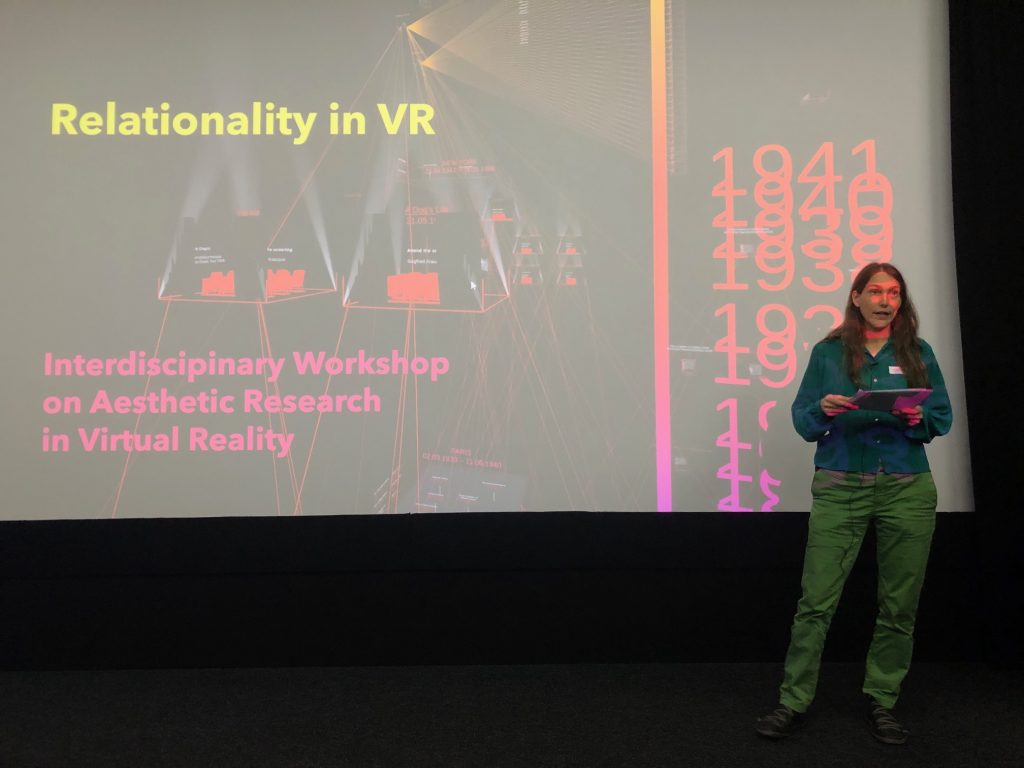
Programme – Relationality in VR
Organizer Hochschule Luzern, Design & Kunst, Dr. Christina Zimmermann, Projektleiterin Forschung
***
Tikka Pia
The talk describes our most recent project The State of Darkness (SOD 2.0; work-in-progress).
SOD 2.0 is a virtual reality installation in which human and non-human lives coexist. The first is lived by the participant while the latter is lived by the non-human Other. The narrative VR system is enactive, this is, all elements of the narrative space are in a reciprocally dependent state with the other elements.
The participant’s experiential moves are interpreted from their biosensor measurements in real-time, and then fed back to drive the different elements of the enactive narrative system. In turn, the facial and bodily behaviour of the artificial Other feeds back to the participant’s experiential states. The scenography and the soundscape adapt to the behaviours of the two beings while these adaptations affect back to the atmosphere of the intimate co-presence between the human and the Other.
The concept of non-human narrative allows the State of Darkness 2.0 to reflect the human-centric perspective against that of a non-human perspective. The intriguing question is whether narratives and the narrative faculty should be considered as exclusively characteristic to humans, or if the idea of narrative can be extended to other domains of life, or even to the domain of artificially humanlike beings.
The SOD 2.0 is an artistic dissemination of the project Enactive Co-presence in Narrative Virtual Reality: A Triadic Interaction Model.The MOBTT90 research project which combines arts and sciences to explore how the viewer’s experience of co-presence can be controlled by parametrically modifying the behavior of a screen character or its context. It is led by research professor Pia Tikka, Baltic Film, Media and Arts School (BFM) & Centre of Excellence in Media Innovation and Digital Culture (MEDIT), Tallinn University.The project is funded by the EU Mobilitas Pluss Top Researcher Grant and Estonian Research Council.Read more of the project here: http://enactivevirtuality.tlu.ee/the-state-of-darkness-ii/